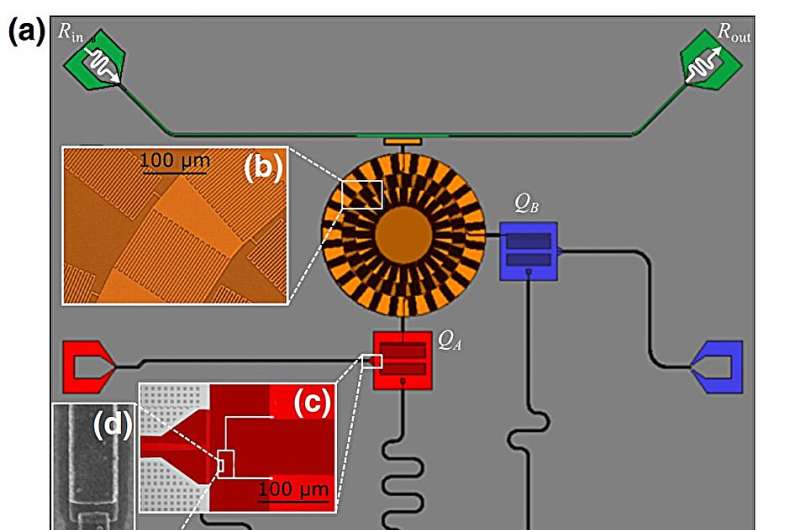
JULY 10, 2024 by Forschungszentrum Juelich
Collected at: https://phys.org/news/2024-07-multimode-coupler-advances-scalable-quantum.html
Implementing a fault-tolerant quantum processor requires coupling qubits to generate entanglement. Superconducting qubits are a promising platform for quantum information processing, but scaling up to a full-scale quantum computer necessitates interconnecting many qubits with low error rates. Traditional methods often limit coupling to nearest neighbors, require large physical footprints, and involve numerous couplers, complicating fabrication.
For instance, coupling 100 qubits pairwise demands a vast number of couplers. Moreover, controlling individual circuit elements and couplers with separate cables for even 1,000 qubits would require an impractically large volume of cables, making it infeasible to fit such a system in a large lab, let alone manage millions of qubits. This highlights the need for more efficient and scalable coupling methods.
A team of theoretical physicists led by Mohd Ansari at FZJ, in collaboration with the experimental team of Britton Plourde at Syracuse University, introduced a novel approach using a multimode coupler that enables tunable coupling strength between any pair of qubits.
Published in PRX Quantum, this research utilizes a shared coupler shaped like a ring, made from a metamaterial transmission line. This design produces a dense frequency spectrum of standing-wave resonances near the qubit transition frequency range. The left-handed ring resonator, composed of 24 inductively grounded and capacitively coupled cells, exhibits a dense set of modes above a minimum cutoff frequency, with mode frequencies spreading further apart at higher frequencies.
This unique design, where the frequency of standing waves is linearly proportional to their wavelength, contrasts with conventional standing waves. For instance, doubling the frequency doubles the wavelength, unlike typical systems where doubling the frequency halves the wavelength. Imagine a musical instrument where higher pitches correspond to longer wavelengths—this concept defies traditional expectations.
Two superconducting qubits placed at the 3 and 6 o’clock positions on the ring resonator couple to the standing waves, with interaction strength depending on the standing-wave amplitude at their locations. Coupling multiple qubits to a common resonant mode induces transverse exchange interactions, with coupling depending on each qubit’s detuning to various modes. These interactions can be positive or negative. Additionally, interactions between higher excited states of each qubit and the coupling modes result in higher-order ZZ interactions, which also vary with qubit detuning and can change sign.
This variability in exchange and ZZ interactions aligns well with theoretical models, allowing the tuning of entangling energy scales from large values to zero. The potential to extend this system to more than two qubits around the ring makes it a promising platform for controlling entanglement in large qubit arrays.
More information: T. McBroom-Carroll et al, Entangling Interactions Between Artificial Atoms Mediated by a Multimode Left-Handed Superconducting Ring Resonator, PRX Quantum (2024). DOI: 10.1103/PRXQuantum.5.020325
Journal information: PRX Quantum

Leave a Reply